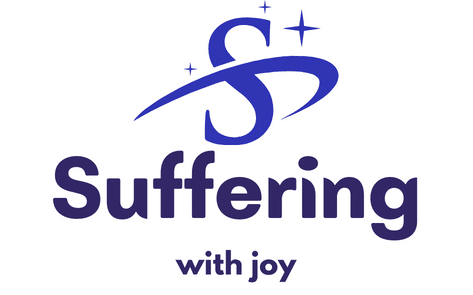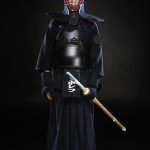The hockey game is a fast-paced sport that demands a high level of cognitive and physical performance from its players. One of the key positions in the game that requires this is the role of the goalkeeper. Time is a critical factor for them as they have to react quickly and make the right decision within fractions of a second. This article explores various strategies that can enhance cognitive decision-making speed in hockey goalkeepers. We present insights from the latest studies, data from sports research, and practical training methods used by leading players. Let’s explore how goalkeepers can sharpen their skills, improve their game, and become the wall that no puck can cross.
The Role of Cognitive Skills in Hockey
The game of hockey is not just about physical abilities. Cognitive skills play a significant role in a player’s performance on the ice. Hockey players, especially goalkeepers, need to be able to make quick and accurate decisions under pressure. This starts with visual perception, which involves tracking the puck and the players, and extends to anticipation, decision-making, and reaction speed.
A découvrir également : What Are the Latest Developments in Anti-Doping Technologies in Professional Sports?
A study published in the journal CrossRef underlines the importance of these cognitive skills. It found that elite hockey goalkeepers have superior visual and cognitive skills compared to lower-level players. They are able to process visual information and make decisions faster, which gives them an edge on the ice.
Training Strategies for Enhanced Decision-Making Speed
Introducing certain training strategies can help hockey goalkeepers improve their decision-making skills. One effective method is cognitive training, which involves simulating game situations and helping players make quick decisions under stress. This type of training can be done both on and off the ice and is a part of the curriculum in many hockey scholar programs.
A découvrir également : How Does Sleep Quality Affect Reaction Times in Formula 1 Drivers?
Another training approach is speed training. This doesn’t just focus on physical speed, but also on cognitive speed. Drills that require players to react quickly to visual cues can help improve their decision-making speed. The key here is consistent practice – the more a goalkeeper is exposed to these drills, the better they become at making swift decisions.
The Role of IntelliGym in Cognitive Enhancement
In terms of technological aids to enhance cognitive skills, IntelliGym stands out. It is a cognitive training tool that uses a computer-based platform to improve players’ game intelligence. Through IntelliGym, players can work on their anticipation, spatial awareness, decision-making, and multitasking skills in a simulated game environment.
The tool provides feedback on players’ performance, helping them identify areas where they need improvement. Studies have shown that regular training with IntelliGym can significantly improve a player’s cognitive skills and on-ice performance. This tool is now widely used in hockey training programs in North America and Europe.
The Value of Real-Time Performance Data
In today’s digital age, the use of real-time performance data is increasingly becoming a part of sports training. In hockey, data gathered during training sessions and games can help trainers and players understand performance levels better, identify strengths and weaknesses, and make informed decisions about training strategies.
For goalkeepers, data on response time, reaction speed, puck tracking, and even eye movement can provide valuable insights. These metrics, when analyzed properly, can lead to individualized training plans that focus on improving decision-making speed.
The Importance of Scholar Programs in Hockey Training
Scholar programs that provide comprehensive hockey training are vital in developing a player’s cognitive skills. These programs not only focus on physical training but also incorporate cognitive drills, speed training, and even tools like IntelliGym.
These scholar programs are run by experienced trainers who understand the demands of the game and the cognitive skills required for good performance. They provide structured training with a balance of physical and cognitive exercises, which can significantly enhance a player’s decision-making speed and overall performance.
In conclusion, enhancing cognitive decision-making speed in hockey goalkeepers is a multifaceted process. It involves targeted training, data analysis, the use of innovative tools like IntelliGym, and comprehensive scholar programs. With the right mix of these elements, hockey goalkeepers can significantly improve their game and excel on the ice.
The Inclusion of Virtual Reality in Cognitive Training and Decision Making
In recent years, virtual reality (VR) has been making great strides in various industries, including sports training. VR is an interactive computer-generated experience that simulates real-life situations. For hockey goalkeepers, this technology can recreate game scenarios and allow players to practice decision-making skills in a controlled, yet realistic setting.
In a study indexed in Google Scholar and PubMed CrossRef, researchers found that VR training significantly enhanced decision-making performance in goalkeepers. The simulation places players in high-pressure situations, forcing them to make immediate decisions. This influences their reaction time and improves their ability to make split-second decisions during actual games.
Moreover, VR can incorporate eye tracking technology, providing additional insights into goalkeepers’ visual attention and processing. This analysis can reveal how a player’s eye movement affects their decision-making speed and overall performance, making it a valuable tool in constructing effective training programs.
However, it is crucial to remember that VR is a complementary tool and not a replacement for on-ice training. It provides an additional layer to existing training strategies, further enhancing a goalkeeper’s cognitive abilities.
Cognitive Training and its Impact on Penalty Corner Situations
A vital aspect of hockey where goalkeepers’ decision-making speed comes into play is during penalty corner situations. These challenging situations pose a stern test to a goalkeeper’s cognitive and physical abilities, requiring them to be exceptionally alert and ready to react within fractions of a second.
Incorporating cognitive training exercises specific to penalty corner situations can help improve a goalkeeper’s performance in these critical phases of the game. Studies indexed in PubMed CrossRef and Google Scholar suggest that training drills simulating penalty corner situations can aid players in making faster and more accurate decisions.
These drills can be designed to focus on various aspects such as predicting opponents’ moves, improving reaction time, enhancing spatial awareness, and developing effective communication with teammates. Regular practice of such drills, especially when combined with technological aids like VR and IntelliGym, can lead to substantial improvements in a goalkeeper’s decision-making speed during penalty corners.
Conclusion
Increasing cognitive decision-making speed in hockey goalkeepers requires a multifaceted approach. Techniques such as cognitive training, speed training, data analysis, and the use of VR and IntelliGym are all part of this strategy. Incorporating these methods into comprehensive scholar programs can significantly improve a goalkeeper’s ability to make rapid and accurate decisions, leading to enhanced performance on the ice.
Despite the technological advancements available, the importance of consistent practice and hard work should not be downplayed. A properly designed training program, combined with dedication and commitment from the player, can turn a good goalkeeper into an exceptional one. The role of experienced trainers and coaches in this journey is also vital, as they provide the guidance and support necessary for the player’s development.
Advancements in sports training continue to evolve, and with it, the methods to enhance a goalkeeper’s cognitive abilities. By embracing these changes and continuously striving for improvement, hockey goalkeepers can indeed become the impenetrable wall that no puck can cross.











